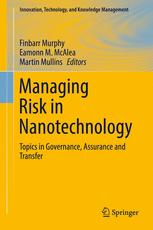

Most ebook files are in PDF format, so you can easily read them using various software such as Foxit Reader or directly on the Google Chrome browser.
Some ebook files are released by publishers in other formats such as .awz, .mobi, .epub, .fb2, etc. You may need to install specific software to read these formats on mobile/PC, such as Calibre.
Please read the tutorial at this link. https://ebooknice.com/page/post?id=faq
We offer FREE conversion to the popular formats you request; however, this may take some time. Therefore, right after payment, please email us, and we will try to provide the service as quickly as possible.
For some exceptional file formats or broken links (if any), please refrain from opening any disputes. Instead, email us first, and we will try to assist within a maximum of 6 hours.
EbookNice Team

Status:
Available0.0
0 reviewsThis book aims to address how nanotechnology risks are being addressed by scientists, particularly in the areas of human health and the environment and how these risks can be measured in financial terms for insurers and regulators. It provides a comprehensive overview of nanotechnology risk measurement and risk transfer methods, including a chapter outlining how Bayesian methods can be used. It also examines nanotechnology from a legal perspective, both current and potential future outcomes.
The global market for nanotechnology products was valued at $22.9 billion in 2013 and increased to about $26 billion in 2014. This market is expected to reach about $64.2 billion by 2019, a compound annual growth rate (CAGR) of 19.8% from 2014 to 2019. Despite the increasing value of nanotechnologies and their widespread use, there is a significant gap between the enthusiasm of scientists and nanotechnology entrepreneurs working in the nanotechnology space and the insurance/regulatory sector. Scientists are scarcely aware that insurers/regulators have concerns about the potential for human and environmental risk and insurers/regulators are not in a position to access the potential risk. This book aims to bridge this gap by defining the current challenges in nanotechnology across disciplines and providing a number of risk management and assessment methodologies.
Featuring contributions from authors in areas such as regulation, law, ethics, management, insurance and manufacturing, this volume provides an interdisciplinary perspective that is of value to students, academics, researchers, policy makers, practitioners and society in general.